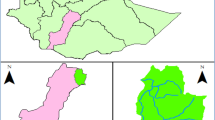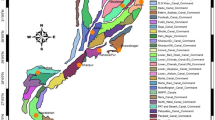Abstract
Water is a vital resource for society and nature, and its scarcity has consequences in all aspects of existence. Today, issues including the inability to preserve the status of existing water resources and excessive water withdrawal are causing the amount of water to diminish day by day. Furthermore, factors such as urbanization and industrialization, population growth, water quality degradation owing to agricultural pesticides, and climate change, all have a negative impact on water supplies. A basin-based water management analysis was carried out in this study by applying the "Integrated Water Resources Management" strategy to the Tahtalı–Seferihisar sub-basin in Turkey, where water stress is expected in the future. Using the WEAP (Water Evaluation and Planning System) model, the hydrological (precipitation, flow, evaporation) data of important water resources for the basin and Izmir (Tahtalı, Seferihisar, Ürkmez, and Kavakdere Dams) were used to predict the availability of water resources in the future, and several possible scenarios for water demands/supplies were analyzed. The water budget balances projected in 2050 have been calculated by considering six different scenarios: Reference Scenario, Report Consumption Scenario, Optimistic Case Scenario, Pessimistic Case Scenario, Return Flow Scenario, and Various Forecast Scenario. The water balances that can be obtained in each scenario under various situations were computed and compared. For all considered scenarios, unmet water demand in the basin is found to be significant (157.52 hm3 in the Optimistic Case Scenario and 373.16 hm3 in the Pessimistic Case Scenario).
















Similar content being viewed by others
Data availability
The datasets used and/or analyzed during the current study are available from the corresponding author on reasonable request.
References
Ahmadaali J, Barani G-A, Qaderi K, Hessari B (2018) Analysis of the effects of water management strategies and climate change on the environmental and agricultural sustainability of Urmia Lake basin, Iran. Water 10:160
Amin A, Iqbal J, Asghar A, Ribbe L (2018) Analysis of current and future water demands in the upper Indus basin under IPCC climate and socio-economic scenarios using a hydro-economic WEAP model. Water 10:537
Andreu J, Capilla J, Sanchís E (1996) AQUATOOL, a generalized decision-support system for water-resources planning and operational management. J Hydrol 177:269–291
Annette H-L, Yates D, Purkey D, Yu W, Runkle B (2003) Water, climate, food, and environment in the Sacramento basin. ADAPT Project
Arnold JG, Srinivasan R, Muttiah RS, Williams JR (1998) Large area hydrologic modeling and assessment part I: model development. J Am Water Resour Assoc 34:73–89
Chinnasamy P, Bharati L, Bhattarai U, Khadka A, Dahal V, Wahid S (2015) Impact of planned water resource development on current and future water demand in the Koshi River basin, Nepal. Water Int 40:1004–1020
Delpla I, Jung A-V, Baures E, Clement M, Thomas O (2009) Impacts of climate change on surface water quality in relation to drinking water production. Environ Int 35:1225–1233
Ebenstein A (2012) The consequences of industrialization: evidence from water pollution and digestive cancers in China. Rev Econ Stat 94:186–201
Flores-López F, Galaitsi SE, Escobar M, Purkey D (2016) Modeling of Andean Páramo Ecosystems’ hydrological response to environmental change. Water 8:94
Gao J, Christensen P, Li W (2017) Application of the WEAP model in strategic environmental assessment: experiences from a case study in an arid/semi-arid area in China. J Environ Manag 198:363–371
Graham DN, Butts MB (2005) Flexible, integrated watershed modelling with MIKE SHE. In: Singh V, Frevert D (eds) Watershed models. CRC Press, Boca Raton, pp 245–272
Hamlat A, Errih M, Guidoum A (2012) Simulation of water resources management scenarios in western Algeria watersheds using WEAP model. Arab J Geosci 2225–2236
Hamlat A, Errih M, Guidoum A (2013) Simulation of water resources management scenarios in western Algeria watersheds using WEAP model. Arab J Geosci 6:2225–2236
Hao L, Sun G, Liu Y, Qian H (2015) Integrated modeling of water supply and demand under management options and climate change scenarios in Chifeng City, China. J Am Water Resourc Assoc 51:655–671
Ilbank Incorporated (2013) İçmesuyu Tesisleri Etüt, Fizibilite Ve Projelerinin Hazırlanmasına Ait Teknik Şartname. Ilbank Incorporated
Kou L, Li X, Lin J, Kang J (2018) Simulation of urban water resources in Xiamen based on a WEAP model. Water 10:732
Labadie JW (2006) MODSIM: decision support system for integrated river basin management. In: International congress on environmental modelling and software. Burlington, Vermont: Brigham Young University
Lévite H, Sally H, Cour J (2003) Testing water demand management scenarios in a water-stressed basin in South Africa: application of the WEAP model. Phys Chem Earth 28:779–786
Li X, Zhao Y, Shi C, Sha J, Wang Z-L, Wang Y (2015) Application of water evaluation and planning (WEAP) model for water resources management strategy estimation in coastal Binhai New Area, China. Ocean Coast Manag 106:97–109
Loon AV, Mathijssen H, Mathijssen P (2007) Water evaluation and planning system Gediz basin—Turkey (WatManSup project). FutureWater, Wageningen
Mounir ZM, Ma CM, Amadou I (2011) Application of water evaluation and planning (WEAP): a model to assess future water demands in the Niger River (in Niger Republic). Mod Appl Sci 5:38–49
Munévar A, Chung FI (1999). Modeling California’s Water Resource Systems with CALSIM. In: 29th annual water resources planning and management conference. Tempe, Arizona: American Society of Civil Engineers
Republic of Turkey Ministry of Forestry and Water Affairs G D (2016) Küçük Menderes Havzası Master Plan Raporu Hazırlanması İşi Master Plan Nihai Raporu. Ankara: SUİŞ Proje
Republic of Turkey Ministry of Agriculture and Forestry G D (2019) Küçük Menderes Havzası- Sektörel Su Tahsisi Eylem Planı (2020–2025). Ankara
Shourian M, Mousavi SJ, Tahershamsi A (2008) Basin-wide water resources planning by integrating PSO algorithm and MODSIM. Water Resour Manag 22:1347–1366
Sieber J (2015) Water evaluation and planning system user guide. Stockholm Environment Institute
Sieber J, Purkey D (2015) User guide for WEAP 2015. Stockholm Environment Institute, Somerville
Skaland RG, Herrador BG, Hisdal H, Hygen HO, Hyllestad S, Lund V, Nygård K (2022) Impacts of climate change on drinking water quality in Norway. J Water Health 20:539
SMART (2005) Regional case study: Gediz River Basin, Turkey
Tena TM, Mwaanga P, Nguvulu A (2019) Hydrological modelling and water resources assessment of chongwe river catchment using WEAP model. Water 11:839
UNICEF (2019) Retrieved from unicef.org: https://www.unicef.org/eap/press-releases/1-3-people-globally-do-not-have-access-safe-drinking-water-unicef-who
United Nations Environment Programme (2016) Retrieved from United Nations Environment Programme. https://www.unep.org/news-and-stories/press-release/half-world-face-severe-water-stress-2030-unless-water-use-decoupled
WEAP21 (2022) WEAP21. https://www.weap21.org/index.asp?action=219&NewLang=EN
Yates D, Purkey D, Sieber J, Huber-Lee A, Galbraith H (2005a) WEAP21—a demand-, priority-, and preference-driven water planning model part 2: aiding freshwater ecosystem service evaluation. Water Int 30:501–512
Yates D, Purkey D, Sieber J, Huber-Lee A, Galbraith H (2005b) WEAP21—a demand-, priority-, and preference-driven water planning model. Water Int 30:501–512
Yates D, Sieber J, Purkey D, Huber-Lee A (2005c) WEAP21—a demand-, priority-, and preference-driven water planning model part 1: model characteristics. Water Int 30:487–500
Yılmaz B, Harmancıoğlu NB (2010) An indicator based assessment for water resources management in Gediz River Basin, Turkey. Water Resour Manag 24:4359–4379
Acknowledgements
The authors express their gratitude to researchers from the Stockholm Environment Institute (SEI).
Funding
No funding was received for conducting this study.
Author information
Authors and Affiliations
Contributions
SMK analyzed the data, created the model on WEAP and prepared the necessary files for the model and transferred it to the model and drafted the manuscript. ŞE supervised the study and revised the manuscript.
Corresponding author
Ethics declarations
Conflict of interest
The authors declare no conflict of interest.
Ethical approval
This article does not contain any studies with human participants or animals performed by any of the authors.
Additional information
Publisher's Note
Springer Nature remains neutral with regard to jurisdictional claims in published maps and institutional affiliations.
Rights and permissions
Springer Nature or its licensor (e.g. a society or other partner) holds exclusive rights to this article under a publishing agreement with the author(s) or other rightsholder(s); author self-archiving of the accepted manuscript version of this article is solely governed by the terms of such publishing agreement and applicable law.
About this article
Cite this article
Karahan, S.M., Elçi, S. Assessment of future water demand in a semiarid region of Turkey: a case study of Tahtali–Seferihisar Basin. Sustain. Water Resour. Manag. 9, 44 (2023). https://doi.org/10.1007/s40899-023-00817-2
Received:
Accepted:
Published:
DOI: https://doi.org/10.1007/s40899-023-00817-2




